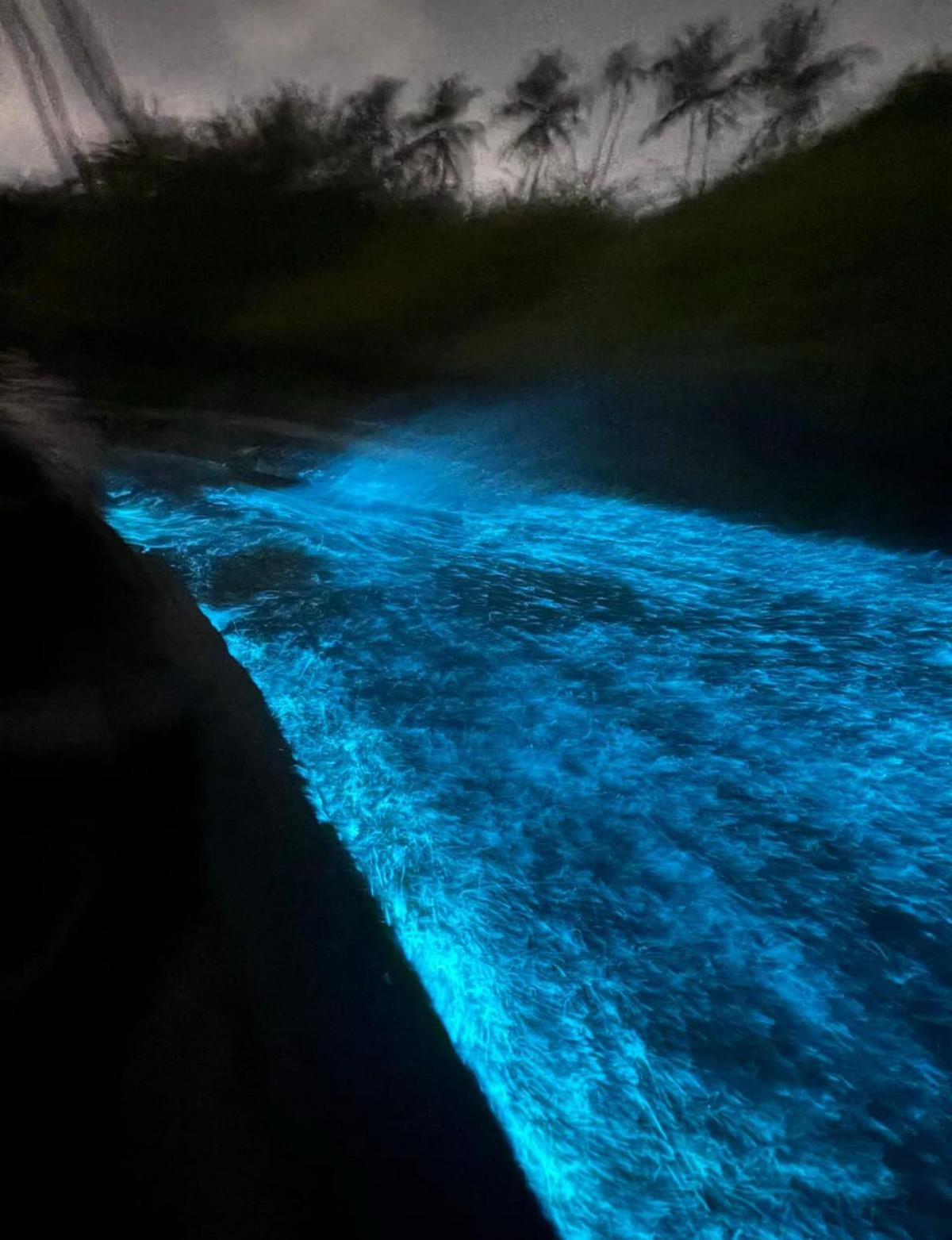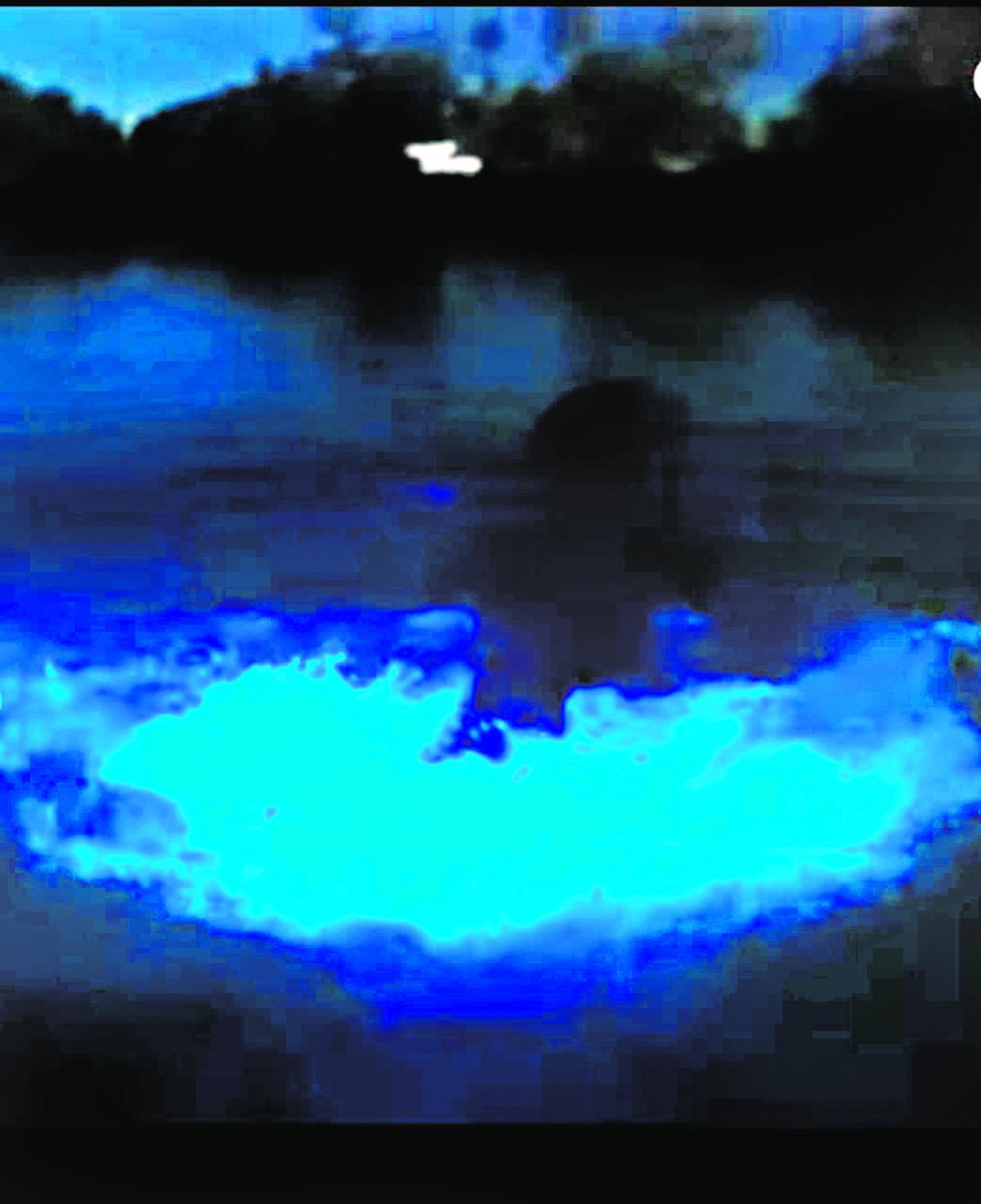
Bioluminescence or sea sparkle, locally called ‘Kavaru’, at Chellanam
| Photo Credit: THULASI KAKKAT
It is that time of the year in Kochi, when the shrimp farms along the backwaters are sparkling in blue shimmer. ‘Kavaru’ or bioluminescence, the environmental phenomenon that gives the waters an electric blue backlight, is now a looked-forward to event on the tourist’s calendar. People from various parts of Kochi and outside visit the fishing villages of Kumbalangi and Chellanam where it is most visible.
Travel and adventure sports companies have curated packages around the phenomenon that usually occurs during the March-April months in these regions.
Kayakify, a canoe and kayak tour agency based in Kumbalangi in Kochi, has been offering tours that let tourists enjoy bioluminescent waters at night. These one-hour sessions take tourists into the shrimp farms in Chellanam on kayaks and canoes.

Bioluminescence at Chellanam captured on a kayak
| Photo Credit:
Special Arrangement
Edwin Joseph, the founder of Kayakify, says kayaking is a relatively sustainable and safe way to enjoy the beauty of the phenomenon. “Bioluminescence occurs only when there is movement on the water’s surface, so visitors tend to throw stones and sticks into the water or sometimes even jump into it to see bioluminescence, which could adversely affect the fish ecosystem. With kayaking, the paddles trigger luminescent ripples, which don’t harm the delicate ecosystem,” says Edwin.
‘Kavaru’ at Chellanam
| Photo Credit:
THULASI KAKKAT
The Kumbalangi-based company had organised bioluminescent kayaking tours last year too on a small scale. The kayaks are two-seaters, there are single seaters as well. Country boats are used as canoes. The tourists would be accompanied by trained instructors and they would be made to wear safety jackets as well. “Since we are doing this on a farm, the waters are not deep. It is safe even for very young children,” says Edwin.
The phenomenon is only visible at night, so the tours typically start from 8pm and go on till 1am.
Arthi Dharmaraj’s travel company Out in Dreams, based in Coimbatore, has already organised two group trips to Kumbalangi in March. “A large part of the popularity of bioluminesence in Kochi can be attributed to Instagram. We usually get a mixed crowd for these group tours and we get questions about the phenomenon, too,” says Arthi. “Bioluminescence is usually more common in oceans and people are curious to understand how it happens in the backwaters,” says Arthi.

Bioluminescence
| Photo Credit:
Special Arrangement
Out in Dreams offers a comprehensive package, which includes other activities around Kumbalangi too, other than bioluminescence kayaking. “We include a tour of the fishing village, including activities such as casting the net. It is a great way to experience the local culture and food,” says Arthi. The company has slotted two more tours in April.
Bioluminescence is caused by dinoflagellate algae, which have luminescent properties. Any movement on the surface of the water — waves, fishing, or swimming can trigger luminescence. Since the phenomenon is caused by a combination of environmental factors — nutrient rich water, favourable temperature and salinity — it usually disappears when it begins to rain.
So keeping the unpredictability factor in mind, these kayaking tours also cash in on Kumbalangi’s village tourism potential. One of India’s first eco-tourism villages, the scenic village has a wealth of shrimp farms and Chinese fishing nets. Tourists also look forward to experiencing the local culture and cuisine.
For information, contact @kayakify.kochi and @out_indreams on Instagram.
Published – April 03, 2025 05:23 pm IST








